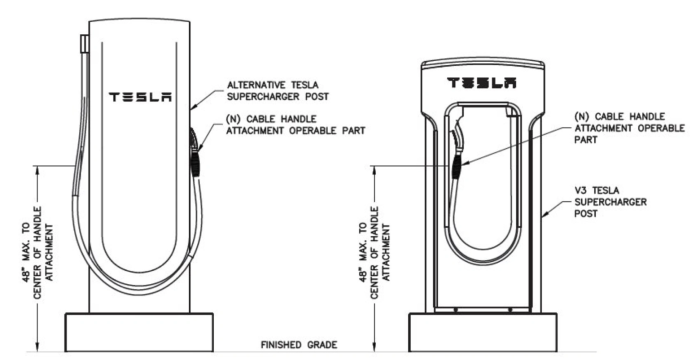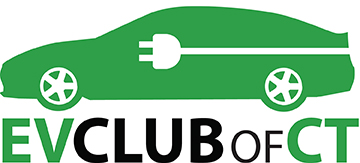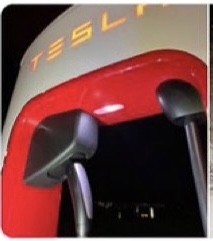Tesla Debuts Combo Port to Accommodate CCS Charging
The photo above, taken by Paul Braren at the Tesla Superchargers in Brewster, NY, displays the new Tesla “Magic Dock.” That is the hunk of plastic at the upper left of the connector. The Tesla connector is plugged into a Combined Charging Standard (CCS) adapter.
Federal NEVI Funding Moves Tesla to Accommodate Open Standard
The background is the National Electric Vehicle Infrastructure (NEVI) part of what is referred to as the bipartisan Federal Infrastructure Bill that predated the Inflation Reduction Act (IRA). There’s money in the air, $5 billion from this legislation, as well as additional funds in the IRA, but proprietary technology will not qualify for federal grants. The CCS standard is used for DC fast charging for every non-Tesla EV. The Tesla charging network is already the most robust. This will enable them to tap federal funds to further accelerate their expansion. The Tesla network has very strong uptime and performance metrics and its entry into the CCS charging space promises to be a major boon for non-Tesla drivers.
7,500 combo chargers by the end of 2024.
As included in a White House press release, “Tesla, for the first time, will open a portion of its U.S. Supercharger and Destination Charger network to non-Tesla EVs, making at least 7,500 chargers available for all EVs by the end of 2024.” That number includes destination chargers, which are level 2 chargers, and it did not specify a breakdown of destination vs Superchargers.
Using the Magic Dock
When a driver uses this combo connector, the smartphone app will tell the charger what kind of car it is. At present, the app is a Tesla app, which can be downloaded by owners of non-Tesla EVs. We’ll see if that creates a problem with the Feds if they demand a more open system. If the app recognizes a Tesla, the charger will unlock only the Tesla connector. For other vehicles, it will unlock the connector with the CCS adapter attached. In the latter case, the CCS adapter will be locked to the Tesla connector so that someone doesn’t make off with it. At present, there are only a small number of these combo chargers installed. According to the Tesla charging network maps, none are in CT; they are only in New York and California.
There is one other issue. This photo is a V3 charger. At Tesla chargers, vehicles back in and the charging port is at the driver’s side-rear of the car, similar to where a gas tank is usually located. The length of charger cord needed to reach the port is pretty short. Different manufacturers locate charging ports in different places on the car. There have been reports of vehicles parking at an angle or horizontally, and taking up multiple spaces, in order to be able to plug in. It is not a simple matter to switch out these cords for longer ones. They are liquid cooled and would experience power loss. Tesla has removed the bollards from at least some of the superchargers, which would provide a tad more wiggle room. Hopefully, nobody crunches into something they shouldn’t!
The solution is a new design, which is what Tesla has previewed here:

The V3 is on the right and the new V4 is on the left. Note the different style of connector with a considerably longer cord, external mounting, and much taller unit in general. That seems to be a good answer. Now we await word on the timing of the planned rollout, which may well be contingent on the timing of the grant funds.




I found this a little confusing, but if I understood correctly, the new CCS adapter is attached to the end of the standard Tesla connector and the CCS is parked on the charger. If the charger recognizes a customer with a Tesla, when the customer pulls out the cable to plug in, the CCS adapter remains locked to the charger. If the charger recognizes a non-Tesla customer, when they pull out the cable to plug into their car, the CCS adapter comes locked to the Tesla plug, and remains that way until the customer returns the cable to its charger socket. Is that correct ?
You are not confused. That is exactly right.